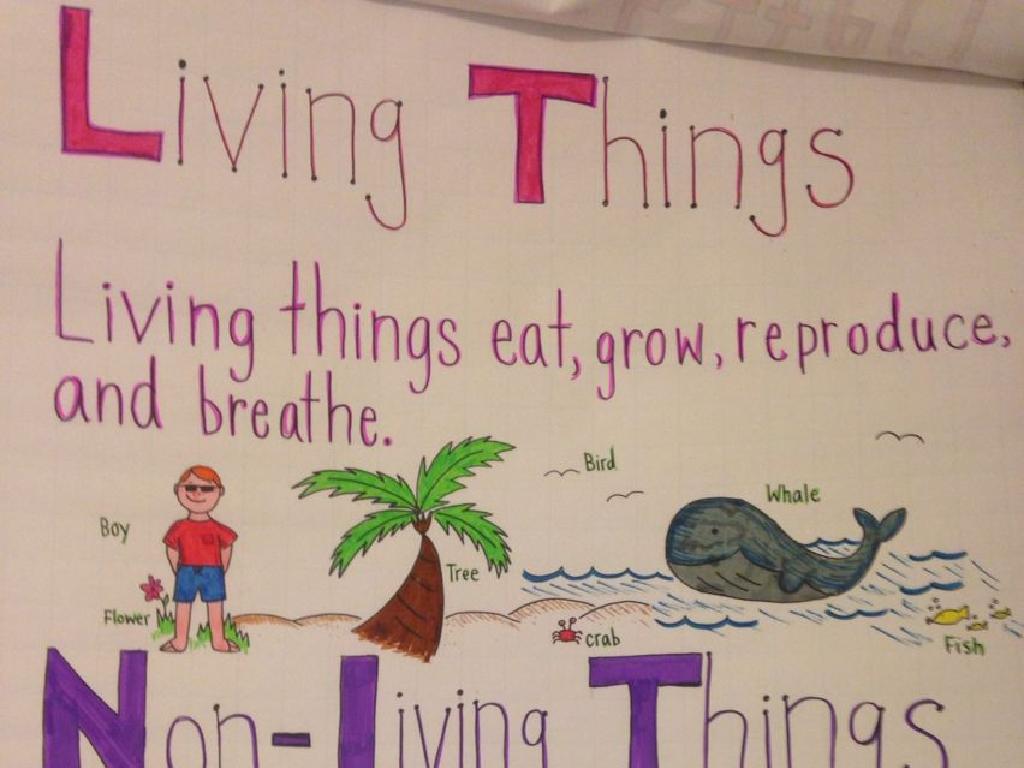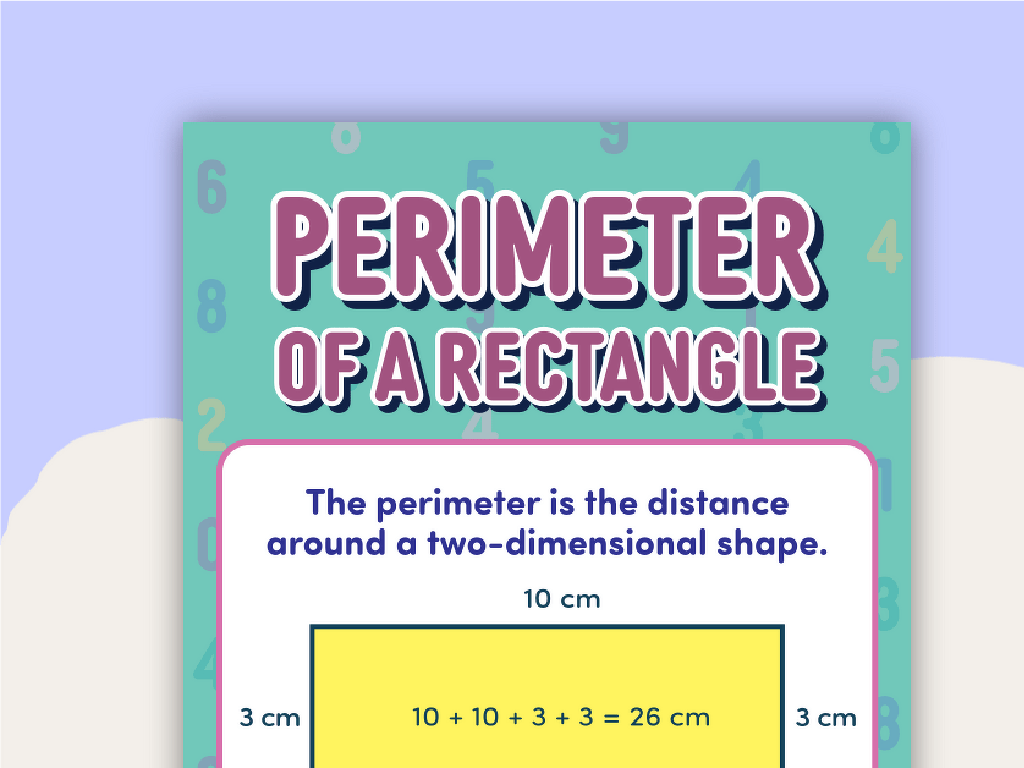Ancient Egypt: The Old Kingdom
Subject: Social studies
Grade: Sixth grade
Topic: Ancient Egypt And Kush
Please LOG IN to download the presentation. Access is available to registered users only.
View More Content
Exploring the Old Kingdom of Ancient Egypt
– Introduction to the Old Kingdom
– The era known for pyramid building, including the Great Pyramid of Giza.
– Timeline of the Old Kingdom
– The Old Kingdom lasted from about 2686 to 2181 BCE.
– Significance in Egyptian history
– It was a period of prosperity and cultural development.
– Key achievements and monuments
– Advances in architecture, art, and governance were made.
|
This slide introduces students to the Old Kingdom of Ancient Egypt, a period that is often referred to as the ‘Age of the Pyramids.’ It lasted from approximately 2686 to 2181 BCE and is marked by great advances in art, architecture, and governance. The Old Kingdom is significant in Egyptian history as it set the foundations for the culture, religion, and politics of later periods. Key achievements include the construction of the pyramids, which served as monumental tombs for pharaohs, and the development of a centralized state. Encourage students to think about how the achievements of the Old Kingdom have influenced our understanding of Ancient Egyptian civilization.
Geography of Ancient Egypt: The Lifeline of the Nile
– Significance of the Nile River
– The Nile was crucial for agriculture, transport, and trade.
– Key geographical features
– Deserts, deltas, and the river itself shaped civilization.
– Geography’s impact on the Old Kingdom
– Geography protected and provided resources, fostering stability.
– The Nile as a source of sustenance
– The river’s predictable flooding ensured reliable crop growth.
|
This slide aims to highlight the central role of the Nile River in the development of Ancient Egyptian civilization, particularly during the Old Kingdom. Emphasize how the Nile’s annual floods were predictable, allowing Egyptians to develop a calendar and agricultural practices that led to prosperity. Discuss the natural barriers like deserts that provided protection from invasions. Explain how the river facilitated trade and interaction with other cultures, contributing to the kingdom’s economic and cultural growth. Encourage students to think about how geography can influence the development of a civilization and compare it to modern examples.
The Pharaohs of the Old Kingdom
– Pharaohs: Rulers of Ancient Egypt
– Pharaohs were seen as gods and kings, holding immense power.
– Divine kingship concept
– Belief that pharaohs were chosen by the gods and served as mediators between gods and people.
– Famous Old Kingdom Pharaohs
– Khufu, builder of the Great Pyramid; Djoser, who commissioned the Step Pyramid.
– Pharaohs’ accomplishments
– They built pyramids, established trade, and maintained ma’at, or cosmic order.
|
This slide introduces the Pharaohs of Ancient Egypt, focusing on their role as divine rulers during the Old Kingdom period. Pharaohs were considered both political and religious leaders, embodying the concept of divine kingship, where they were seen as gods on earth chosen to maintain order and justice, known as ma’at. Highlight famous pharaohs like Khufu and Djoser, who were responsible for the construction of iconic structures like the Great Pyramid and the Step Pyramid, respectively. These accomplishments reflect the pharaohs’ ability to mobilize resources and their significance in Egyptian society. Encourage students to think about how the role of the pharaohs might compare to modern leaders and the impact of their legacies on our understanding of Ancient Egypt.
Daily Life in the Old Kingdom
– Life for different social classes
– Pharaohs lived lavishly, while farmers worked the land.
– Variety of roles and jobs
– Jobs ranged from scribes to builders, each with a specific role.
– Family and education
– Family was central, with children learning trades from parents.
– Leisure activities
– Games, music, and feasts were common leisure activities.
|
This slide aims to give students a glimpse into the everyday life of people during the Old Kingdom of Ancient Egypt. It’s important to highlight the stark differences in lifestyle between the various social classes, from the pharaohs and nobility to the farmers and slaves. Discuss the roles and jobs that were essential to the functioning of society, such as farmers who tended to the fields and craftsmen who created goods. Emphasize the importance of family life, where education often meant learning a trade from one’s parents. Lastly, touch upon the leisure activities that were enjoyed, such as playing the board game Senet, listening to music, and attending feasts. Encourage students to compare and contrast these aspects with their own lives to foster a deeper understanding of the Old Kingdom’s culture.
Religion and Beliefs in the Old Kingdom
– Central role of religion in society
– Religion influenced politics, daily life, and architecture, like the construction of pyramids.
– Deities of the Old Kingdom
– Major gods included Ra, the sun god; Anubis, the god of mummification; and Osiris, god of the afterlife.
– Mummification process
– Preserving the body was crucial for the journey to the afterlife.
– Beliefs about the afterlife
– Egyptians believed in an eternal life after death, which was why they mummified their dead.
|
This slide aims to give students an understanding of the profound impact religion had on the Old Kingdom of Egypt. Religion was intertwined with every aspect of society, from governance to daily routines. Introduce students to the pantheon of gods and goddesses that Egyptians worshipped, emphasizing the roles of Ra, Anubis, and Osiris. Explain the mummification process, highlighting its significance in Egyptian culture as a preparation for the afterlife. Discuss the Egyptian concept of the afterlife, which was a driving force behind their funerary practices and the construction of monumental structures like pyramids and tombs.
The Great Pyramids and Sphinx of Egypt
– Significance of pyramids and Sphinx
– Monuments symbolize Egypt’s power and religious beliefs
– Construction of the Great Pyramids
– Massive limestone blocks, manual labor, and ancient engineering
– Pyramids: Tombs for Pharaohs
– Sacred burial sites designed to honor and house pharaohs in afterlife
– Architectural symbolism
– Reflects ancient Egyptians’ knowledge of astronomy and geometry
|
This slide explores the Great Pyramids and the Sphinx, highlighting their importance in ancient Egyptian culture. The pyramids and the Sphinx are not only architectural marvels but also a testament to the religious and political power of the pharaohs. Discuss the construction techniques, which remain a topic of fascination, emphasizing the use of simple tools, manpower, and ingenuity. Explain that the pyramids served as tombs to ensure the pharaohs’ journey to the afterlife, with intricate designs reflecting their beliefs in the cosmos. The architecture also demonstrates the Egyptians’ advanced understanding of mathematics and astronomy. Encourage students to reflect on the significance of these structures and what they reveal about the values and knowledge of ancient Egypt.
The Fall of the Old Kingdom
– Causes of the Old Kingdom’s decline
– Power struggles, resource shortages contributed to the fall
– Drought and famine’s role
– Lack of Nile floods led to crop failures, starvation
– Political instability’s impact
– Rulers weakened, local leaders gained power
– Transition to the Middle Kingdom
– Society and government restructured, ushering a new era
|
This slide discusses the decline of the Old Kingdom of Egypt, focusing on the contributing factors such as drought, famine, and political instability. The Old Kingdom era, known for its prosperity and the construction of the pyramids, faced significant challenges when the Nile River failed to flood. This led to widespread famine and weakened the central power of the pharaohs. As a result, local leaders began to assert more authority, leading to fragmentation and chaos. Eventually, this period of decline gave way to the Middle Kingdom, which saw a reorganization of society and government. Encourage students to think about how environmental changes can impact a civilization and to consider the importance of strong leadership during times of crisis.
Class Activity: Building a Pyramid
– Group pyramid construction
– Discuss ancient builders’ challenges
– Consider tools, manpower, and resources available at the time
– Reflect on teamwork and engineering
– How did collaboration and planning play a part?
– Share experiences with the class
– What did you learn from this activity?
|
This activity is designed to give students a hands-on experience related to the construction of pyramids in Ancient Egypt. Divide the class into small groups and provide materials such as cardboard, glue, and scissors. As they build, encourage discussions about the challenges faced by the Egyptians, such as transporting heavy stones and aligning the pyramid sides. After the activity, lead a reflection on the importance of teamwork and the engineering skills that were necessary for the ancient builders. Ask students to consider what they learned about working together and problem-solving. Possible variations of the activity could include using different materials, limiting resources to mimic ancient constraints, or assigning specific roles within each group to parallel the specialized labor of the Egyptians.






